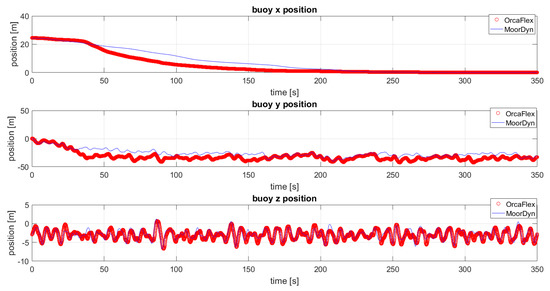
The ADCP will be deployed near the National Oceanic and Atmospheric Administration’s (NOAA) National Data Buoy Center (NDBC) Station 44098, Jeffrey’s Ledge in 300 meters of water. The process is repeated until the optimal design converges on one which satisfies the constrained design objectives. The revised DoE will require adjusting the levels of the factors, or adding new factors, to improve the results. If the optimal design does not satisfy the design constraints, a revised DoE is developed. The results of the DoE simulations are used to develop a regression model based on the design constraints. Next, a DoE experiment is set up and computer simulations are run. These levels represent the highest and lowest likely values for each design factor. Upper and lower levels are determined for each factor. An initial design is proposed, and design constraints are quantified. The DoE approach allowed for efficient examination of a very large design space, identification of the design factors that have the greatest impact on the design objectives, and development of an optimal design.įig. In the present study, MMC applied a DoE approach to design a mooring system for a submerged ADCP. When the number of factors is large, then the number of all possible combinations of levels and factors can become excessive, so a fractional factorial experiment may be designed that still ensures there is no aliasing between factors and first order interactions between factors. This can be done using each possible combination of levels and factors, or a subset of each combination. Next, two levels are selected for each factor, and experiments are carried out on the system. A DoE setup will require first identifying the factors to be examined. ĭoE is a systematic approach to quantify how sensitive a system is to factors that are believed to influence that system.

The Design of Experiments (DoE) approach overcomes these shortcomings. Second, this approach fails to study how design factors might interact with each other. First, the number of variables is artificially limited, to limit the time and effort to carry out an experiment. There are two limitations with this approach. Simple experiments often attempt to isolate variables and study their effects on a system one at a time. This regression model accounted for both the first-order interactions between factors, and the competing design objectives discussed above.

The results of the experiment were then used to optimize the system based on linear regression of the DoE results. Using the DoE methodology, an experiment was designed to identify the factors that drive mooring system performance and cost. This approach satisfied the objectives above by applying computer simulations in a Design of Experiments (DoE) framework. MethodologyĪ simulation-based engineering approach was used to design an optimal single-point mooring for a subsea Acoustic Doppler Current Profiler (ADCP). A successful design approach must balance multiple competing criteria without requiring excessive simulation time, while resulting in a mooring system that meets the design criteria under all expected environmental conditions without overdesigning the system. Increasing the buoyancy creates greater stress on the mooring line and increases the anchor weight requirement. For example, oversizing the mooring line adds weight to the system, which in turn increases the buoyancy requirement.

An overdesigned system increases component costs and requirements for deployment assets. An under-designed system could allow excessive instrument motion or movement of the anchor. Furthermore, environmental conditions and seafloor characteristics must be accounted for properly. These criteria include the deployment depth range, acceptable pitch angles, and cost. Numerous competing criteria must be considered when designing mooring systems for oceanographic instruments. Keywords-Acoustic Doppler Current Profiler ADCP Mooring Design Design of Experiments This methodology limited expensive simulation time while resulting in a satisfactory mooring design. A design methodology based on Design of Experiments (DoE) theory was used to develop a mooring system that satisfied all the competing design objectives while minimizing cost. Design criteria included wire rope safety factor, chain load safety factor, ADCP pitch, ADCP knockover (set down), anchor sliding, and the recoverability of the Acoustic Release. Design variables included buoy shape, buoy volume, gravity anchor mass, chain size, acoustic release buoyancy, and wire rope diameter. Target deployment depth, environmental conditions, and seafloor characteristics were identified for the selected site in the Gulf of Maine. Numerous inputs and criteria were considered. A model-based engineering approach was used to design an optimal single-point mooring for a subsea Acoustic Doppler Current Profiler (ADCP).


 0 kommentar(er)
0 kommentar(er)
